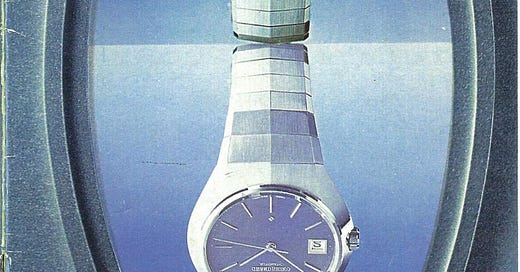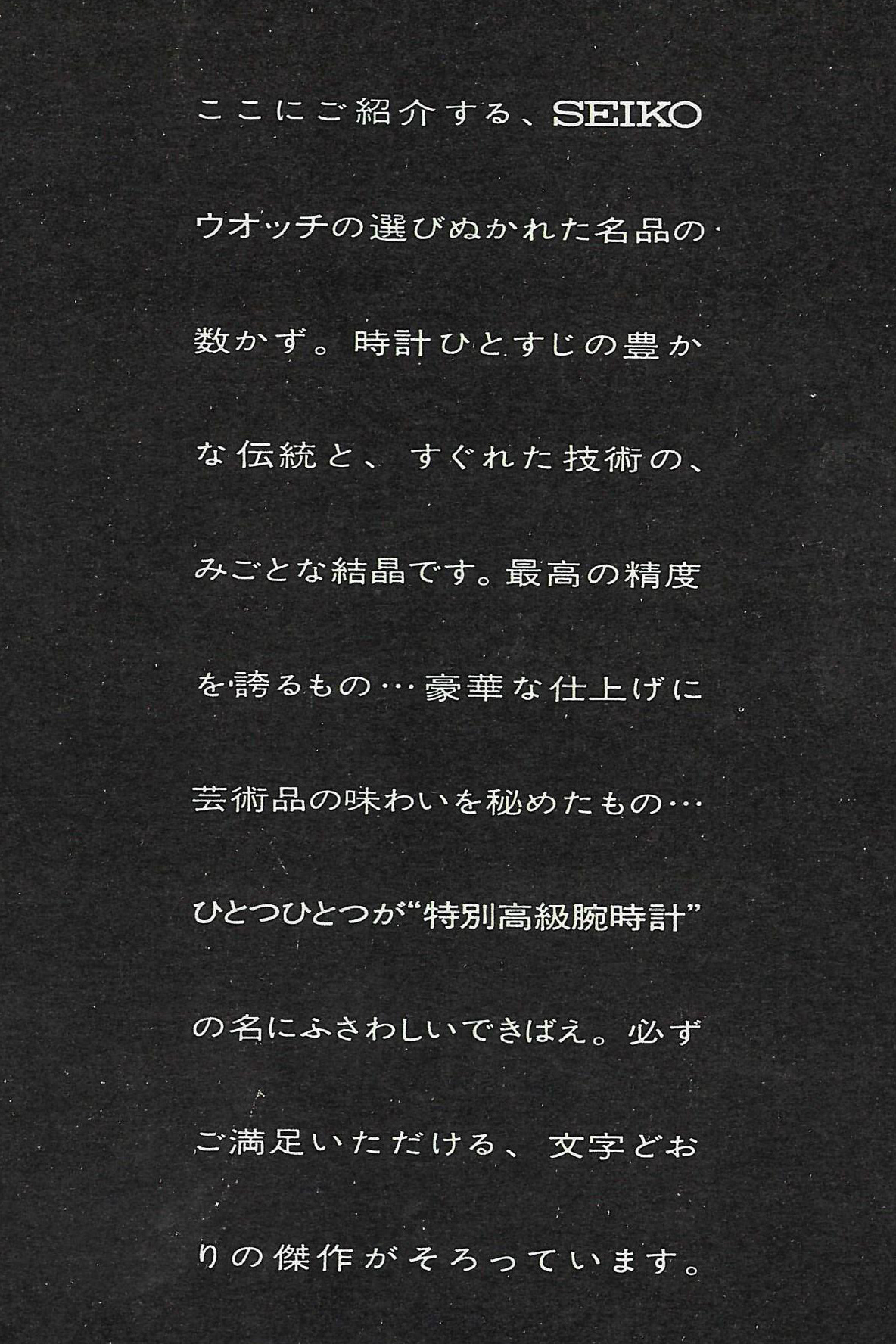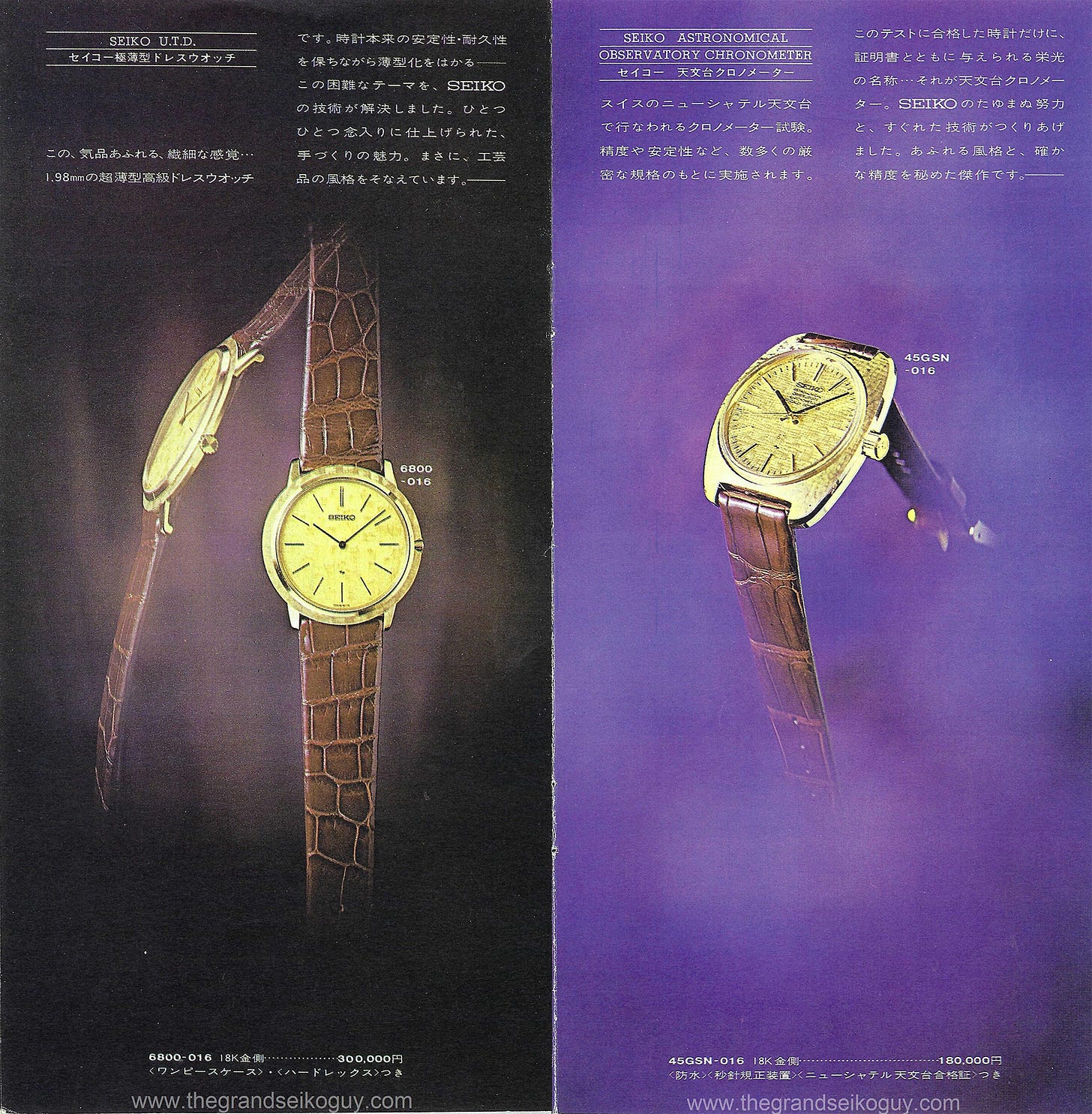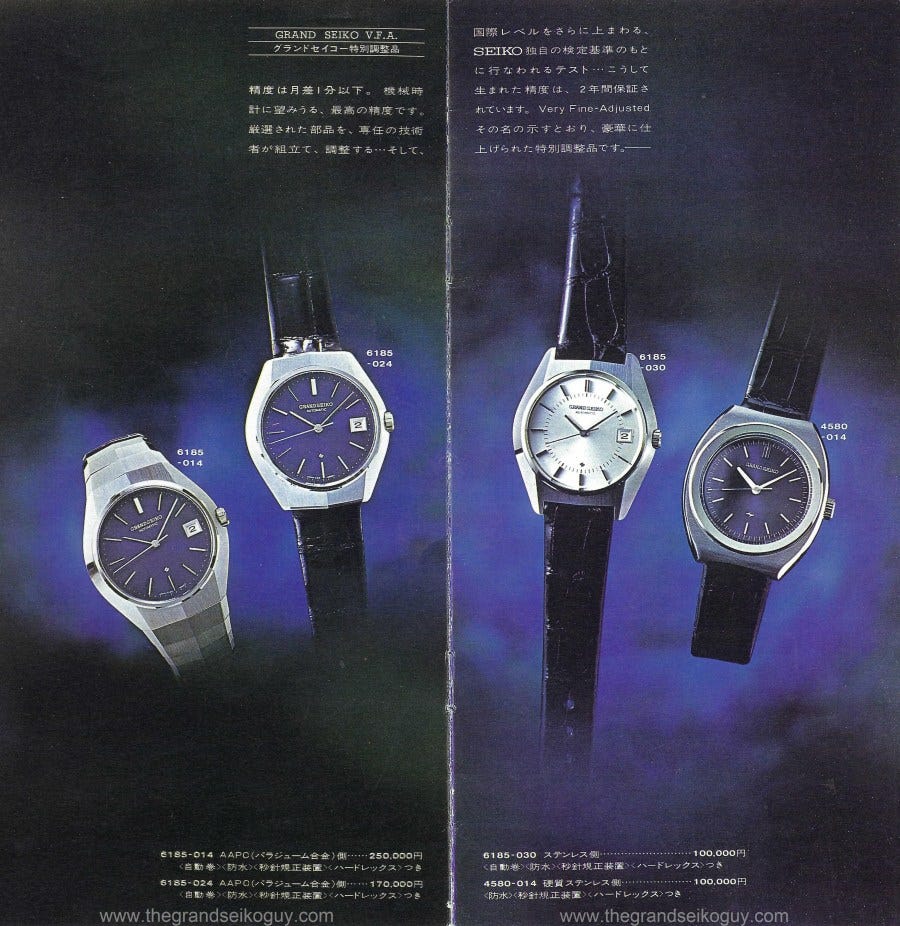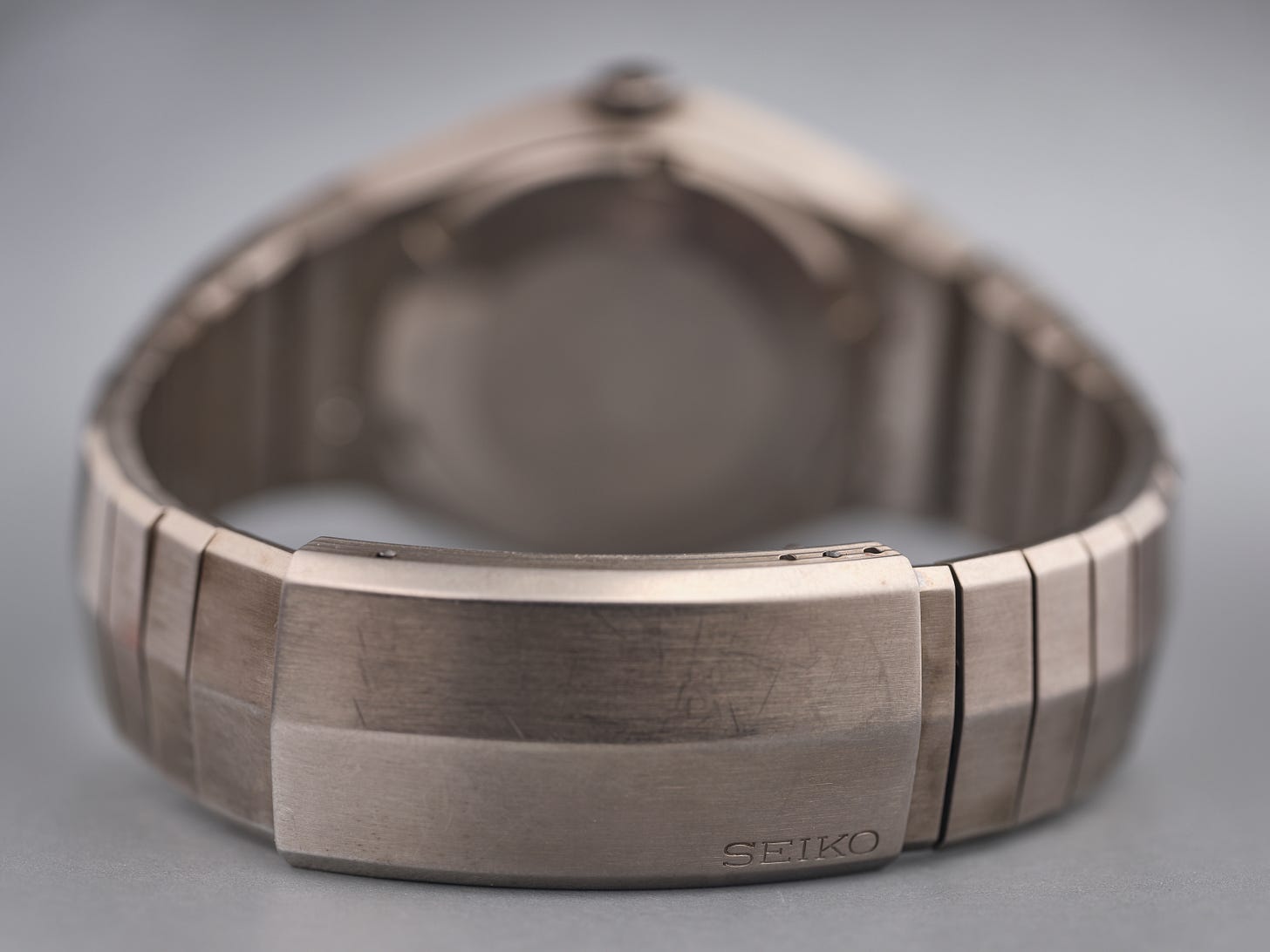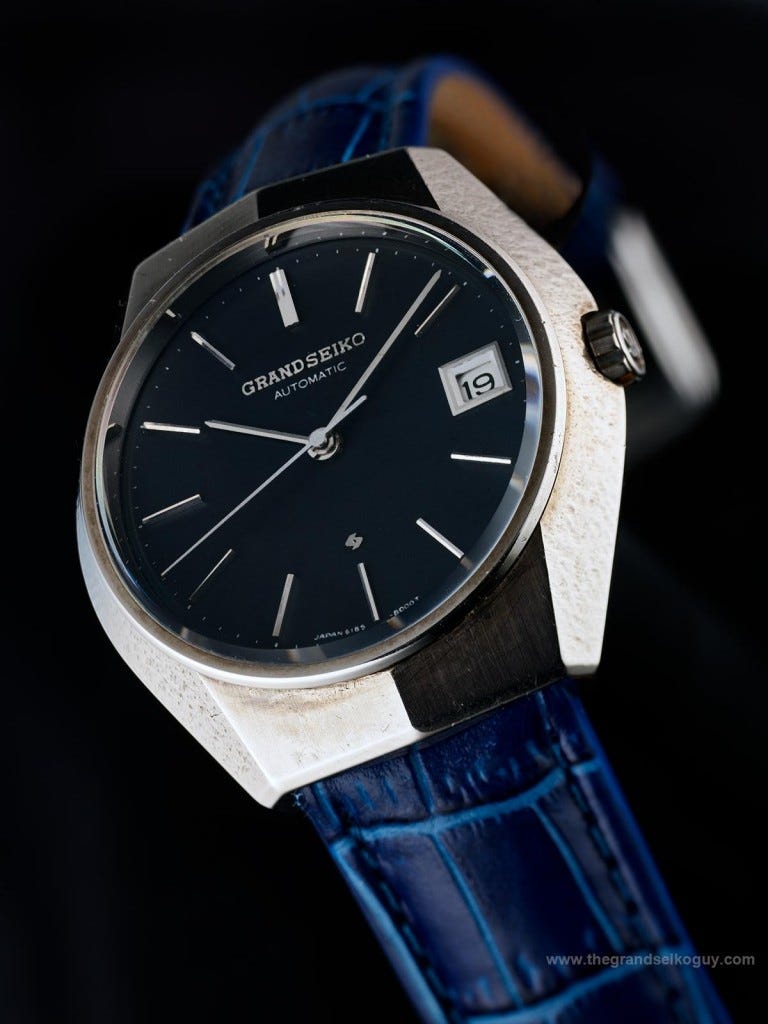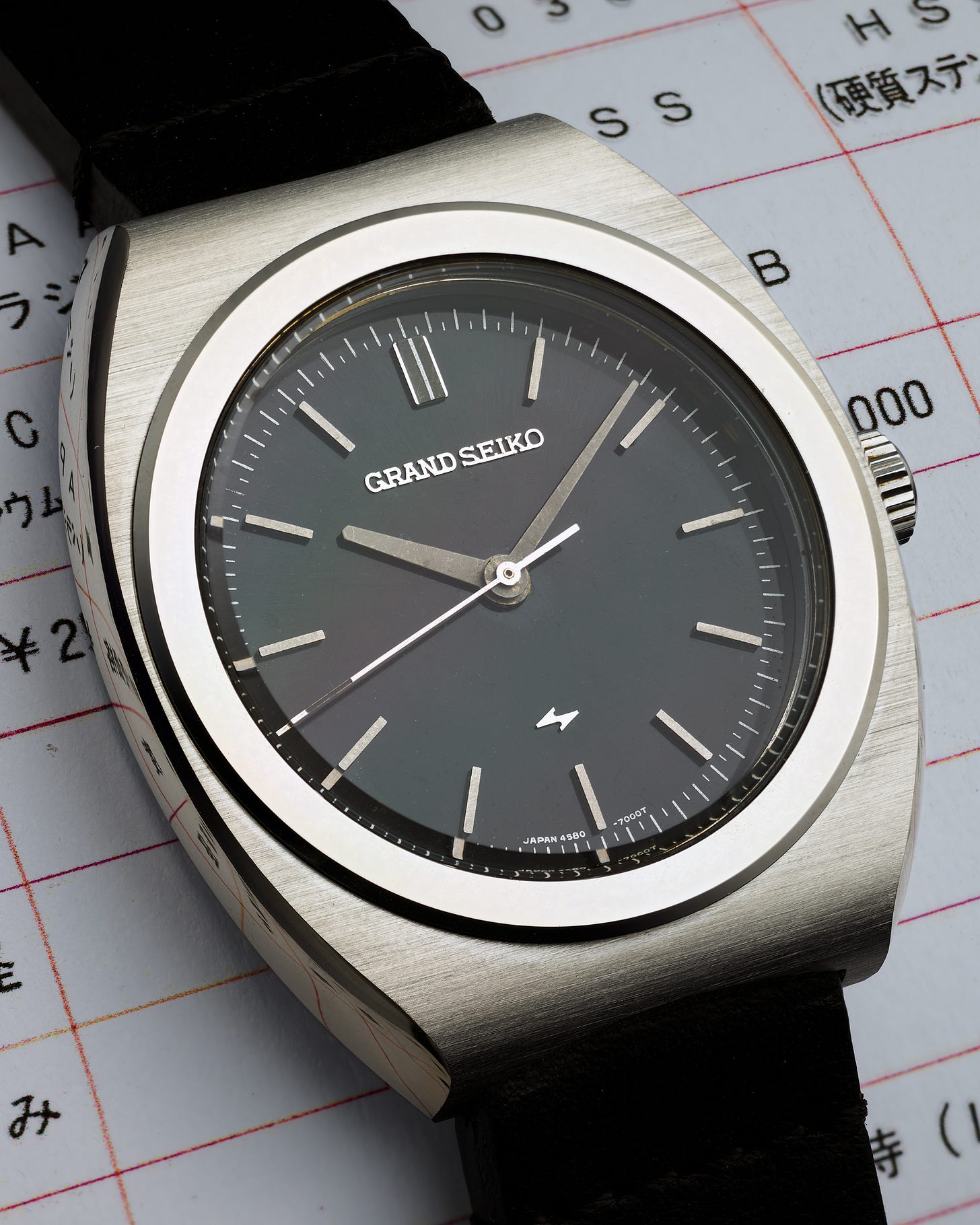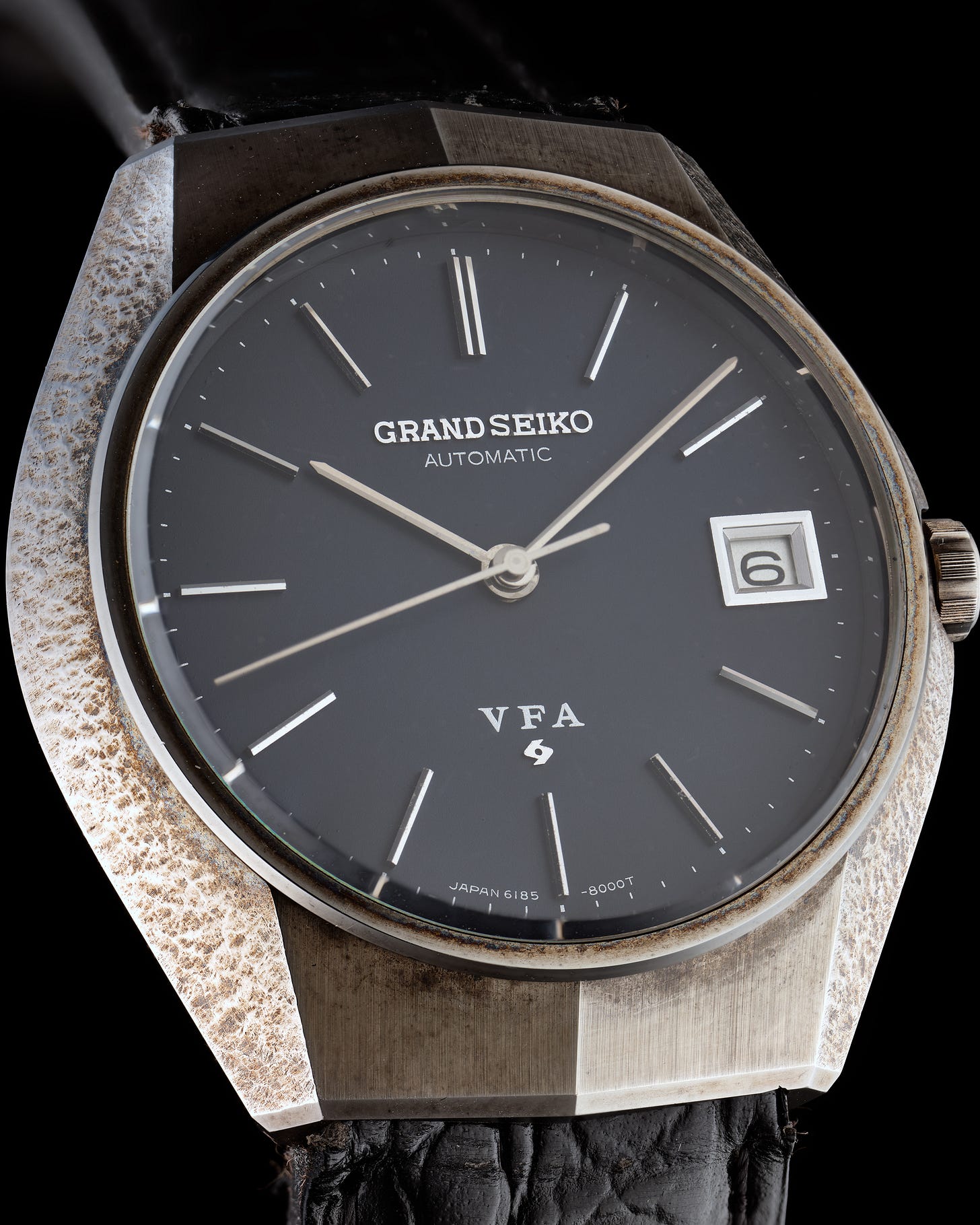Preamble
For the benefit of those subscribers who have signed up recently, each Tuesday I publish an article featuring scans of vintage Grand Seikos that appeared in the Seiko catalogues of the 1960’s and 1970’s.
Although based on the articles originally published on TGSG website, these articles will be updated where appropriate with additional knowledge gained in the three or so years since they were first made available.
Additionally, since I now have the complete set of the catalogues, I am able to publish these articles in the correct chronological order - something that wasn’t possible when posting to the main website since, when starting out documenting the catalogues, I hadn’t completed my collection of them.
You can view the previously published newsletters in this series here.
The Seiko 1969 Special Luxury Catalogue
As will be obvious from the scan of its cover pictured above, the 1969 Seiko Special Luxury Catalogue is very different from the “regular” catalogues that we have covered to-date.
It is the first of seven annual catalogues published from 1969 through to 1975, and featured the very top of the range Seiko watches. These catalogues are extremely rare, and currently I have only those from 1972 and 1973 in my library. On a trip to the Seiko Museum in Tokyo, I was able to take photocopies of the pages from the Special Luxury Catalogues that featured vintage Grand Seiko watches, and also other watches of interest.
Not even the Seiko Museum has a complete set of these, and if anyone knows of the whereabouts of any that I am missing, please don’t hesitate to get in touch - I will pay very handsomely for the missing ones to complete my collection!
By the end of 1969, Grand Seiko had been on their journey to create the world’s finest watch for close to a decade and it is therefore not surprising to discover many top-of-the-line Grand Seiko featured on the pages of this publication. The period from 1969-1970 truly does represent the absolute pinnacle of the vintage Grand Seiko era.
The introductory text on the inside front cover of the catalogue explains that the purpose of the catalogue is to present a select few “masterpieces” from the Seiko watch collection, describing those watches as embodying the rich tradition of Seiko, along with world beating technology, and in luxurious finishes.
The closing line of text translates to “Each one is a masterpiece - literally”, and once you start turning the pages of the catalogue, it’s hard to argue with that statement.
First, some “regular” Seikos
It is interesting to note that, whilst historically Grand Seiko represented the absolute top-of-the-range references in the entire Seiko offering, in this catalogue there are actually two Seiko branded watches presented before the Grand Seikos.
This makes the 1969 issue of the Seiko Luxury Catalogue the first catalogue of the era not to feature Grand Seikos at the very front of the publication. This would become a common feature of all subsequent Special Luxury Catalogues, although in the regular catalogues Grand Seiko continued to take pride of place until finally supplanted by quartz references in 1972.
So before we get onto looking at the Grand Seikos, let’s first take a brief look at what could possibly be promoted above the Grand Seiko line!
Whilst the watch on the right hand page will probably be familiar to most readers, the watch that is featured before all others in this catalogue may not be so well known.
The 6800 movement utilised in the “Ultra-thin Dresswatch”, or “UTD” for short, was just 1.98mm in depth, and remembering that the purpose of this catalogue was to highlight Seiko’s world-beating technology, it is no surprise to find it so prominently featured. At under 2mm, this calibre is one of the thinnest mechanical movements ever made. One only has to look at the retail price of the watch – 300,000 Yen – to get some perspective on just how challenging and expensive it must have been to create this astonishing wristwatch. Yes – it has an 18K gold case, but compare the size of that case to the other 18K gold cased references in this catalogue and you’ll realise that it’s not the precious metal that is responsible for the bulk of the value here!
With regards to the watch on the right hand page, although not strictly speaking a Grand Seiko, the Seiko Astronomical Observatory Chronometer is about as close to being a Grand Seiko as it is possible to get, without actually being branded as one.
Produced in three batches from 1969 through to 1971, I would strongly encourage anyone interested in learning more about this legendary watch to check out Anthony Kable’s seminal article on this watch over at Plus9Time.
One peculiar detail of the watch pictured in this catalogue is that if you look closely, you will see that it has a Grand Seiko crown (albeit the GS is upside down in the photo). I have never seen an example of this watch with a Grand Seiko crown. The first batch of Astronomical Observatory Chronometers featured specially regulated 4520 movements, and all batches had the same case – identical to that of the Grand Seiko 4520-8010, as can be seen in the photo below.
It is not beyond the realms of possibility that at the time this catalogue was being produced, Seiko simply didn’t have any completed Astronomical Observatory Chronometers to hand for the photo shoot (quite possibly the first batch of movements were still at Neuchatel being certified), and had to mock one up replacing just the dial of a Grand Seiko 4520-8010 with that for the 4520-8020.
Five Grand Seiko references cased in solid 18K gold
With these two remarkable watches out of the way, on turning to the next pages of the catalogue, we find the first of the Grand Seiko references to be featured.
The text at the top of the page highlights Grand Seiko’s reputation for stable and accurate timekeeping, and that the watches presented all have 36000 beats per hour movements which have gone through 360 hours of continuous testing. And of course, they are all presented in 18K gold cases.
Five references are presented, ranging in price from 140,000 Yen for the manual wind time only 4520-8010 (catalogue code 45GS-030) up to 195,000 Yen for the automatic day-date 6146-8000 (catalogue code 61GAW-010).
All five of the references pictured here were introduced in either the 1969 Number 2 catalogue, or its supplement.
The debut of the Grand Seiko VFAs
For those interested in vintage Grand Seiko, it is the watches introduced on the next two pages that are the exciting ones.
The four references pictured on this double page spread are of course the first of the Grand Seiko VFA’s to be launched. I think it’s worth going over each of them one by one with some additional photos.
On the left, we see the watch that is also pictured on the cover of the catalogue - the remarkable 6185-8000 (catalogue code 6185-014), with its palladium/silver alloy case and “lobster” bracelet.
All four of the VFA’s featured in this catalogue are extremely rare, but the 6185-8000 is without a doubt the rarest of them all, and I am aware of fewer than 5 examples in existence today.
The next watch pictured is the 6185-8010 (catalogue code 6185-024), and if all one had to go on was the catalogue photo, one might assume that it is simply the 6185-8000, but presented on a strap.
However, this is not the case.
The catalogue photo shows a watch whose case flanks are highly polished, whereas when we see examples of this reference surface, the case sides have a hand-hammered finish.
One other difference between the cases of the 6185-8000 and the 6185-8010 is that the case-ends of the former do not have the pronounced bevel that we see on the latter. What this means is that the catalogue photo of the 6185-8010 can’t simply be a 6185-8000 on a strap.
Quite why this discrepancy exists is a mystery. Although published in late 1969, we find examples of the VFA’s featured in the Special Luxury Catalogue dating from a full year earlier in December 1968, based on their caseback serial numbers. It therefore seems unlikely that there weren’t finished examples available for photography.
The third watch featured is the 6185-8020 (catalogue code 6185-030), making it three out of four for Suwa and their 6185 VFA movement.
Here we see a broadly familiar case profile to the previous two watches, but this time presented in hardened stainless steel, and with the case cutaway at the lugs, rather than covered as found with the 6185-8000 and -8010.
The 6185-8020 features a very distinctive dial with raised indices possibly alluding to the monolith from Stanley Kubrik’s 2001: A Space Odyssey, that would be carried over to later VFA’s.
The final VFA featured is from Daini - the 4580-7000.
With barely a hint of any element of the “Grammar of Design”, the 4580-7000 is a remarkable watch unlike any other from the vintage Grand Seiko era.
Like the other VFA’s featured here, it is extremely rare, and examples come to the market very infrequently.
When one examines examples of the 4580-7000, 6185-8000 and 6185-8010 today and compares them to the catalogue images, one thing stands out - the original blue colour of the dials has all but vanished.
This is rather common “feature” of blue-dialed Seikos from this period. Whatever pigments were used to create the dials clearly desaturates over the years, and almost all examples of originally blue-dialed watches that have survived have dials that have “faded” to varying degrees of grey.
The final thing to note about the four VFA’s introduced in this catalogue is that none of them actually say “VFA” on the dial - nor for that matter, on the caseback either.
However, at some point in time, Suwa produced dials marked VFA for all three of the watches shown here. Whether original dials had the print added at a service, or had their dials entirely replaced, is currently a complete mystery that is only compounded by what would be described as a “dead stock” example of the 6185-8010 that I currently have in the collection.
Summary
The Special Luxury Catalogue from 1969 serves as a very important publication in the history of Grand Seiko. The introduction of the VFA’s, with their guaranteed precision of 1 minute per month, demonstrate in production timepieces the lessons both Suwa and Daini would have learned from their participation in the Swiss chronometry competitions of the 1960’s.
Also evident from this catalogue is the growing prominence of precious metal cased watches in the wider Seiko range, and Seikos relentless focus on reaching new heights in horological technology.
In the first catalogue of 1969, the most expensive watch in the entire Seiko range was the 6146-8000 in a cap gold case, priced at 48,000 Yen.
Here, we see multiple examples of precious metal cased watches, and Grand Seikos priced from 100,000 Yen up to 250,000 Yen.
What a difference a year makes!

